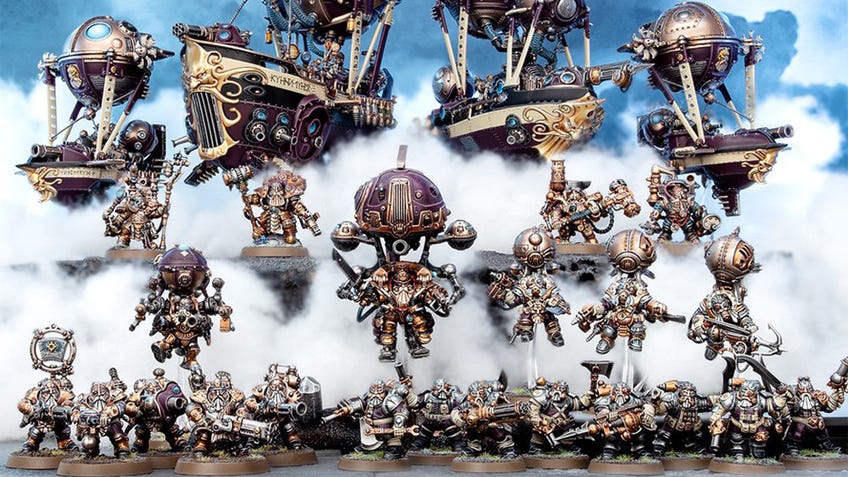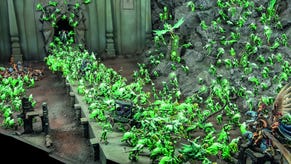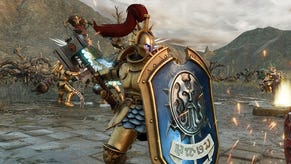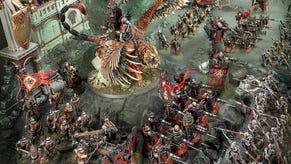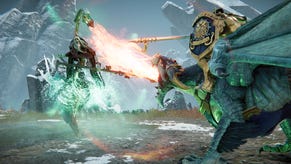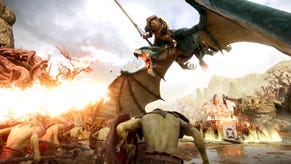New to Warhammer? Now’s the best time to get into Age of Sigmar's fantasy universe
A Slaanesh start.
With its long and storied history and wide range of products, Warhammer can seem impenetrably complex to new players. The initial backlash against Age of Sigmar upon its release in 2015 may even make it seem that it simply isn’t worth the time, money or effort to pick up today. This is incorrect. In fact, Warhammer is arguably better now than it ever has been.
Warhammer Fantasy Battle was first published in 1983. As the setting was applied to an ever-increasing range of wargames, board games and pen-and-paper RPGs, it became a staple among the tabletop community. The universe was intriguing, with a Tolkien-esque attention to detail, and subsequent editions progressed the narrative, adding factions and ramping up the tensions of a world whose prophecies were bleak. Players sank immeasurable time and money into the miniatures game. Perhaps that’s why some were more than a little put-out when publisher Games Workshop destroyed it all. The fantasy world fell to the legions of Nagash, succumbing to complete Chaos and leaving a blank slate from which Warhammer: Age of Sigmar was born.
My first introduction to Age of Sigmar was through the recent tabletop RPG Soulbound, playing a re-hashed Stormcast Eternal version of my character in the older Warhammer Fantasy Roleplay. The Stormcast are an interesting - if at times underpowered - faction of beings whose souls were plucked from the fantasy world as it succumbed to Chaos and reforged into new bodies by Sigmar himself. Essentially immortal, each time a Stormcast “dies” Sigmar forcefully retrieves and reforges their soul into a new body, but every time this happens a piece of their identity is lost - a unique element that adds depth to a recycled character.
The first Soulbound campaign I played saw the team visiting each of the Mortal Realms, providing a wide variety of environments to explore, from innocuous-looking villages harbouring dark secrets to underwater caverns and lakes of molten metal - a stark contrast to the medieval towns of Warhammer Fantasy.
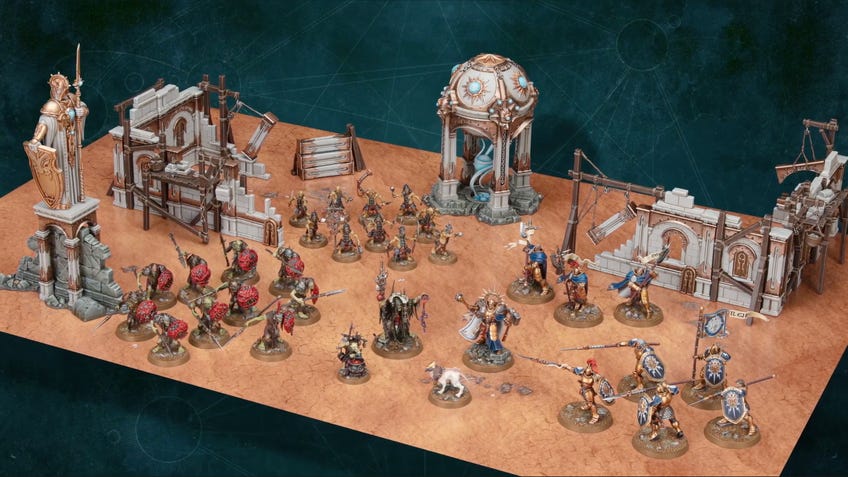
While the original setting of Warhammer Fantasy was annihilated, certain mechanical elements were carried over into Age of Sigmar. Many of these mechanics can be found in Soulbound, such as predominantly using only one type of dice (the more common d6 instead of WFRP’s d10s) and the inclusion of endeavours, a selection of activities characters perform between adventures to improve their statistics and equipment.
The diverse and fleshed-out setting of Soulbound meant I could become more invested in my character and their beliefs.
Soulbound pushes Fantasy Roleplay’s idea of endeavours further, providing the group and individuals with narrative short-term and long-term goals, which reward experience points. Players are encouraged to tie these goals into the themes of the campaign, providing a more immersive gameplay experience. In Fantasy Roleplay my long-term goal was to obtain a specific piece of equipment, which felt generic enough that it could have been applied to almost any setting. In my latest Soulbound campaign, set in the Realm of Hysh/Light where Aelves reign supreme over other races, my Duardin character is determined to prove to the Aelves that other races are equally talented and capable. The diverse and fleshed-out setting of Soulbound meant I could become more invested in my character and their beliefs, and thus become more immersed in the roleplay.
For those who prefer competitive gameplay, there is still the traditional Age of Sigmar wargame, with innumerable bands of precision-painted miniatures clashing over territories. However full-scale wargames don’t appeal to everyone, and Warhammer still has more to offer new players.
There is a board game set in the Age of Sigmar universe called Warhammer Underworlds: Direchasm, which sees slightly smaller warbands clash over resources while plundering the depths of caverns. Direchasm plays like a smaller, scaled-back version of Age of Sigmar; models are moved across a board using hexes rather than being measured against a ruler, dice rolls are used to determine the success of attacks and the game is won in just three rounds by scoring points on objective cards rather than by eliminating the enemy.
The two boards provided with Direchasm are double-sided and can be placed together in any configuration, providing varied environments with hazards and barriers to dodge around, and each warband has unique assets and abilities to play with - while the Lumineth Realm-lords can re-roll dice by spending their Aetherquartz, the Slaanesh warriors become stronger as they take more damage. The push-fit models are easier to assemble than classic miniatures, if more fragile, and are just as easy to paint. For a newcomer to the world of Warhammer, and certainly for those who have never assembled models before, Direchasm is an excellent starting point that still has plenty of depth for more experienced players.
Warhammer Fantasy was a fantastic setting and helped to establish a mainstay of modern tabletop gaming, but Warhammer: Age of Sigmar - in all its forms - is its refined successor. Fantasy settings are not uncommon in tabletop gaming and often feel generic and uninspired. While Age of Sigmar certainly draws on common themes such as the inclusion of elves and dwarves, the society is also far more diverse in terms of the races, religions and even genders that can be explored. The stories of each faction have more unique features to distinguish them and more fleshed-out backstories, and the more technologically advanced setting allows for the melding of both magic and engineering.
By starting afresh Warhammer became more welcoming for new players while providing something new for experienced gamers.
The threat of annihilation in Warhammer Fantasy was becoming stale, with each new edition finding increasingly awkward ways of averting the prophesied end of the world. After three decades of Armageddon creeping closer and closer, it was time to do the unthinkable; by starting afresh it became more welcoming for new players while providing something new for experienced gamers. Age of Sigmar is more varied, more interesting and there are simply more possibilities for where the story and world goes from here. Where Warhammer Fantasy was good, Age of Sigmar is better.
